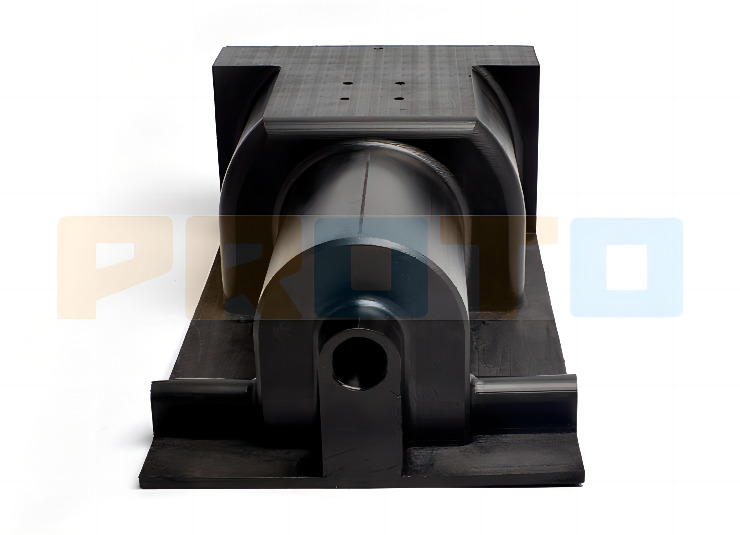Polyoxymethylene (POM), also known as polyacetal, polyoxymethylene, and polyoxymethylene, is one of the plastic materials that has many advantages when it comes to CNC machining parts. This plastic is popular across several industries due to its excellent properties, advantages, and various uses. It is a reliable material in engineering applications due to its chemical resistance, dimensional stability, mechanical strength and low friction.
So, what is POM material? Is CNC machining of POM materials suitable for manufacturing parts? Read on as we provide more information on processing POM.

POM is an engineering thermoplastic with a variety of beneficial properties. Some of its properties include excellent hardness, strength, and stiffness. Although it can be made in a variety of colors, its high crystallinity gives it a natural opaque white appearance. The density of POM is between 1.410 and 1.420 g/cm3.
POM plastic is often used to manufacture precision parts that require dimensional stability, high stiffness and low friction. This low friction makes POM ideal for rotating or sliding components such as sleeves, bearings and gears.
Like many other synthetic POM polymers, POM is manufactured by multiple chemical companies with slightly different formulations and sold under many brand names such as Celcon, Tenac, Duracon, and others.
High-performance engineering plastic polyoxymethylene (POM) is widely used in many fields. It is suitable for a variety of applications due to its unique properties.
Low friction and wear resistance: POM plastic stands out for its low coefficient of friction, which helps explain why it has such excellent self-lubricating properties. Due to reduced frictional resistance, wear is reduced, overall efficiency is higher, and fluid sliding or rotational motion is achieved.
Chemical Resistance: POM is ideal for manufacturing products that come into contact with substances such as chemical solvents, such as pump parts, seals and fuel system components. This is largely due to POM plastic’s excellent resistance to a wide range of chemicals, solvents and fuels. It resists contact with many organic chemicals, alcohols, oils and greases without significant deterioration.
Low water absorption and dimensional stability: POM plastic has excellent dimensional stability, maintaining its size and shape even under conditions of humidity and temperature changes. It absorbs very little water, making it less susceptible to moisture-related problems like warping and dimensional changes. Applications requiring precise tolerances and consistent performance also rely heavily on POM’s dimensional stability.
Ease of Processing: The ease of processing of POM plastic enables precise and efficient manufacturing processes. It is easy to form, machine, turn and drill, making it easy to manufacture complex parts and complex designs. Because of this property, POM resin is often used in applications requiring complex geometries and high precision.
Excellent Creep/Impact Resistance: POM plastic exhibits excellent creep resistance, which means it can withstand sustained mechanical stress without deforming. Due to this characteristic, POM parts can still function properly even if they are constantly subjected to load or strain.
There are generally two methods that can be used to machine POM parts. The first is to use standard processing methods. The second method is by annealing pre-machined POM parts.
To machine POM, you first need to generate a CAD file of the part and then convert it to CAM for further conversion into G-code that can be processed by CNC machine tools. The next step is to cut the POM workpiece to a specific size for placement on the machine tool. After the POM workpiece is cut to the appropriate size, it is placed on the machine tool and fixed using clamps to ensure it does not move during processing.
It is important to ensure that the POM workpiece is firmly held in position because CNC cutting tools use preset coordinate movements and any changes in the workpiece position or alignment can negatively impact part quality.
After ensuring that the POM workpiece is stable, professional cutting tools fixed on the CNC machine tool are used to remove material from the workpiece. The recommended cutting tool is a general purpose flat end mill as it is more efficient when processing plastics.
Finally, vacuum the CNC machine frequently when machining POM to ensure that debris from the material does not clog the milling cutter.
PROTO MFG provides a wide range of manufacturing capabilities and other value-added services for all of your prototyping and production needs. Visit our website to learn more or to request a free, no-obligation quote.